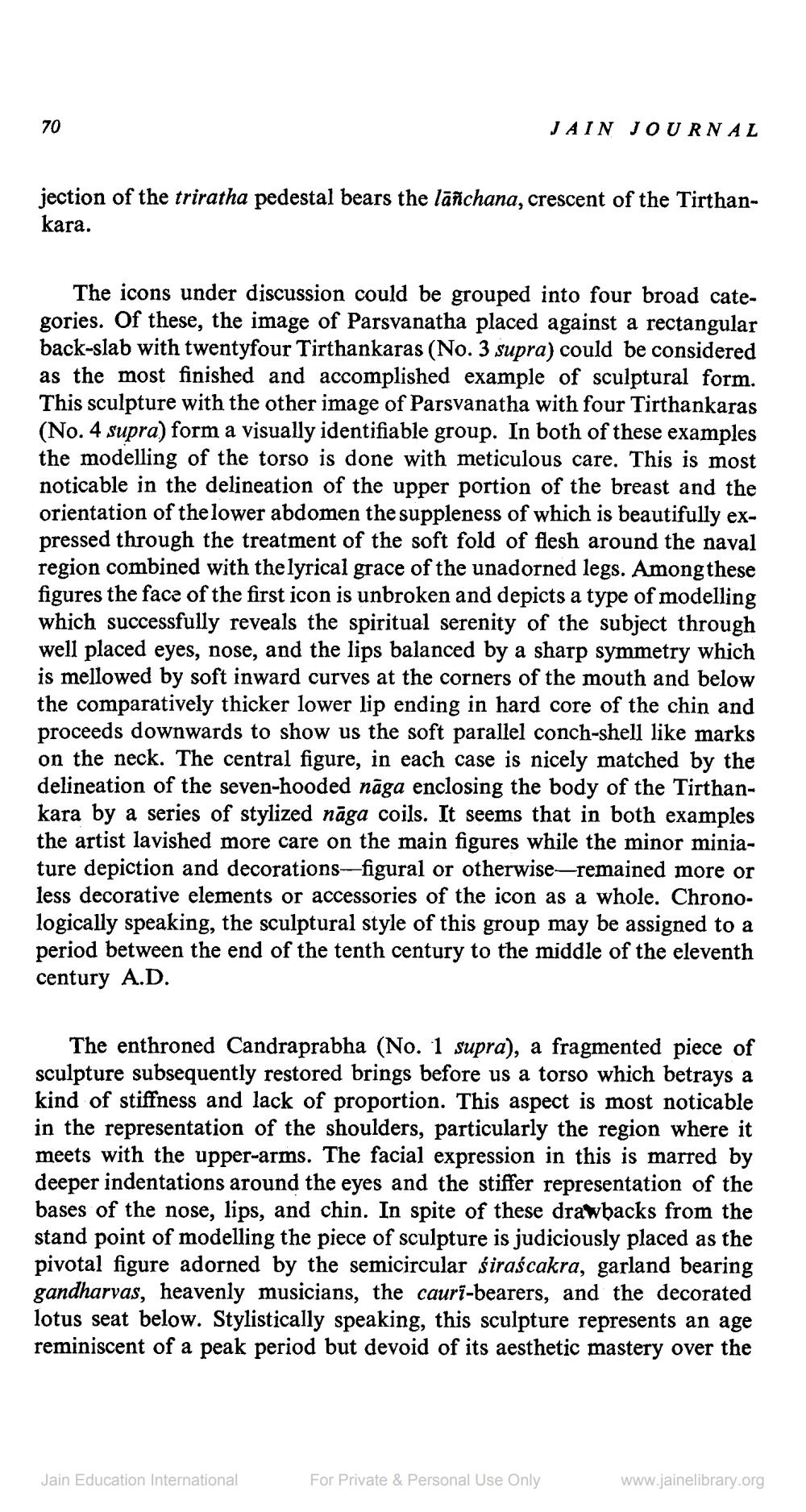________________
JAIN JOURNAL
jection of the triratha pedestal bears the lāñchana, crescent of the Tirthankara.
The icons under discussion could be grouped into four broad categories. Of these, the image of Parsvanatha placed against a rectangular back-slab with twentyfour Tirthankaras (No. 3 supra) could be considered as the most finished and accomplished example of sculptural form. This sculpture with the other image of Parsvanatha with four Tirthankaras (No. 4 supra) form a visually identifiable group. In both of these examples the modelling of the torso is done with meticulous care. This is most noticable in the delineation of the upper portion of the breast and the orientation of the lower abdomen the suppleness of which is beautifully expressed through the treatment of the soft fold of flesh around the naval region combined with the lyrical grace of the unadorned legs. Among these figures the face of the first icon is unbroken and depicts a type of modelling which successfully reveals the spiritual serenity of the subject through well placed eyes, nose, and the lips balanced by a sharp symmetry which is mellowed by soft inward curves at the corners of the mouth and below the comparatively thicker lower lip ending in hard core of the chin and proceeds downwards to show us the soft parallel conch-shell like marks on the neck. The central figure, in each case is nicely matched by the delineation of the seven-hooded nāga enclosing the body of the Tirthankara by a series of stylized nāga coils. It seems that in both examples the artist lavished more care on the main figures while the minor miniature depiction and decorations-figural or otherwise-remained more or less decorative elements or accessories of the icon as a whole. Chronologically speaking, the sculptural style of this group may be assigned to a period between the end of the tenth century to the middle of the eleventh century A.D.
The enthroned Candraprabha (No. 1 supra), a fragmented piece of sculpture subsequently restored brings before us a torso which betrays a kind of stiffness and lack of proportion. This aspect is most noticable in the representation of the shoulders, particularly the region where it meets with the upper-arms. The facial expression in this is marred by deeper indentations around the eyes and the stiffer representation of the bases of the nose, lips, and chin. In spite of these drawbacks from the stand point of modelling the piece of sculpture is judiciously placed as the pivotal figure adorned by the semicircular sirascakra, garland bearing gandharvas, heavenly musicians, the cauri-bearers, and the decorated lotus seat below. Stylistically speaking, this sculpture represents an age reminiscent of a peak period but devoid of its aesthetic mastery over the
Jain Education International
For Private & Personal Use Only
www.jainelibrary.org




